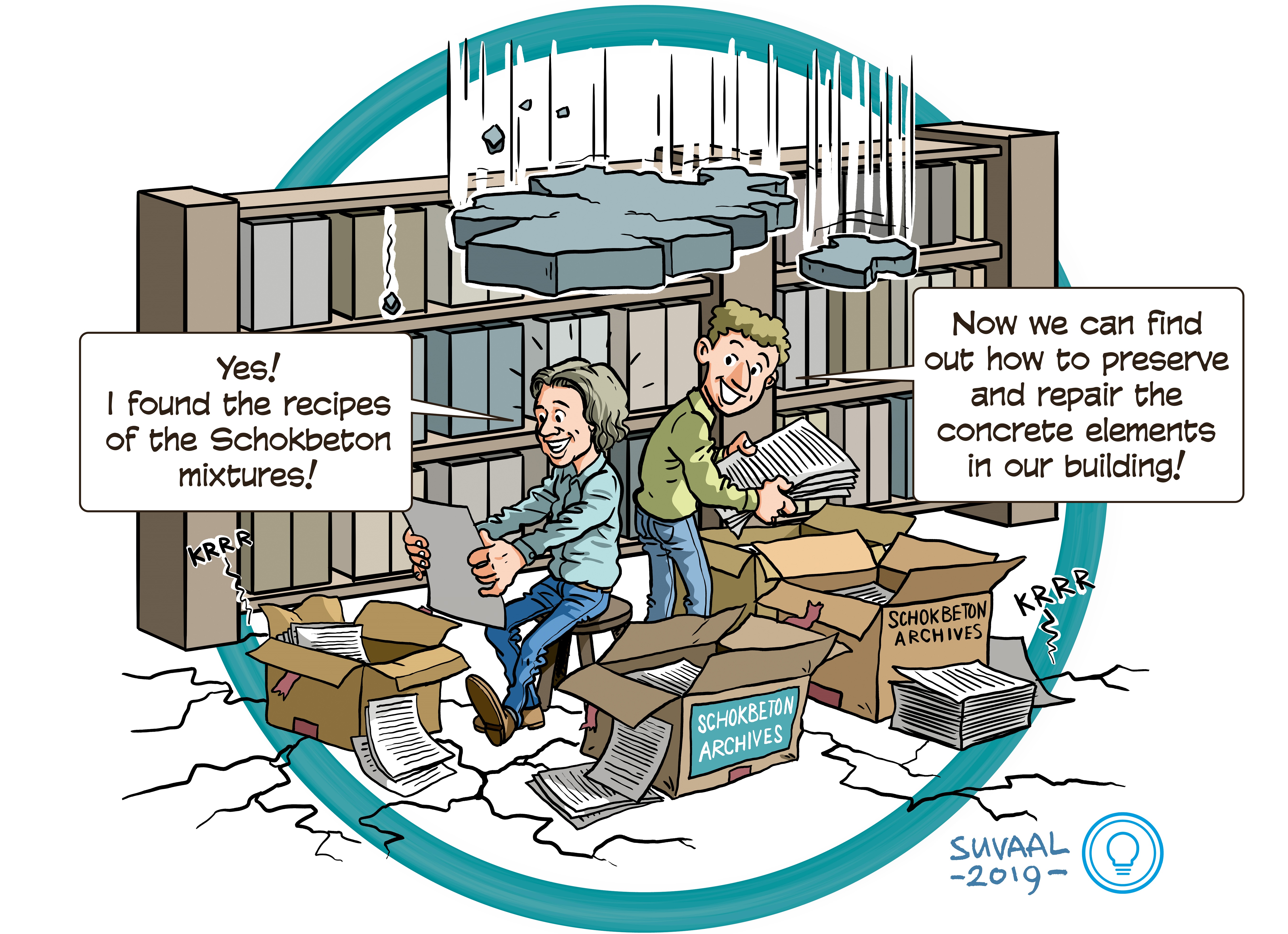Materials for refurbishment; The Schokbeton Archive
Themes: Materials, Social Impact


A TRL is a measure to indicate the matureness of a developing technology. When an innovative idea is discovered it is often not directly suitable for application. Usually such novel idea is subjected to further experimentation, testing and prototyping before it can be implemented. The image below shows how to read TRL’s to categorise the innovative ideas.
Summary of the project
The researcher aims to add technical and architectural background information of stone based materials to the conservation practice of buildings. More technical information about the materials used increases the efficiency of actions needed for repair and preservation. Architectural pre cast concrete is such material that has been used a lot in building from the 1920’s onwards. For a bulk material such as concrete, the mixture, the production process and where it has been used is not well documented. However, recently the TU Delft has acquired the Schokbeton company archives. This archive holds information on the recipes of the Schokbeton mixtures, the types of elements produced and for which buildings the elements were produced.
The project is unique in that it brings together the patented production process, recipes for the Schokbeton mixture, different historic samples of concrete and information about the buildings in which this type of concrete has been used. This creates opportunities for understanding how this type of concrete ages over time, and gives insight in ways to preserve and repair these types of concrete elements and buildings.
What's next?
There are a few next steps for this research project. The data from the Schokbeton archive provides the basis for international comparison as the patented compacting technology was exported globally. Subsequently the researcher is working on disclosing all available data online. Besides, with the recipes, the historic samples and the knowledge on the patented technology it is interesting to do microscopic research into the microstructure of the different concrete mixtures. This is expected to give new insights in the aging process of these types of concrete and consequently repair and conservation techniques can be designed.
Dr. Wido Quist
